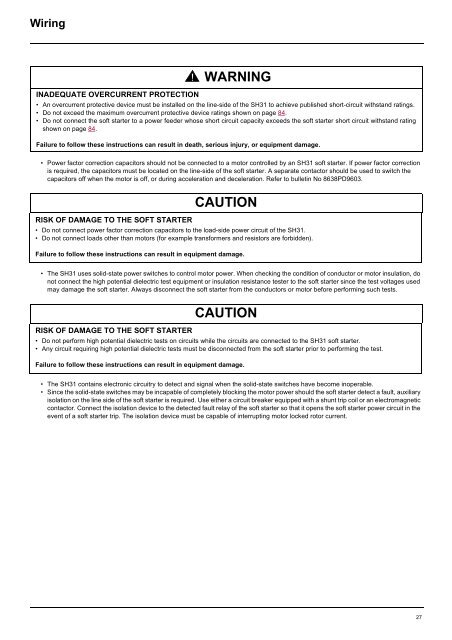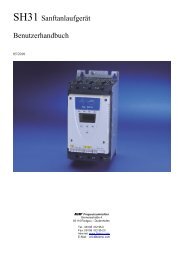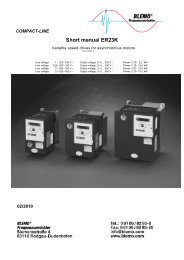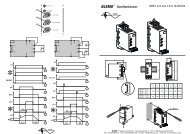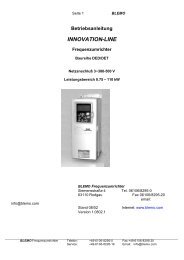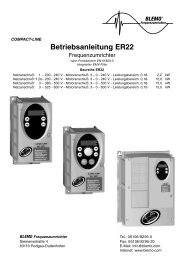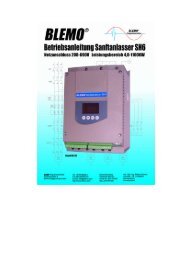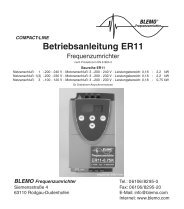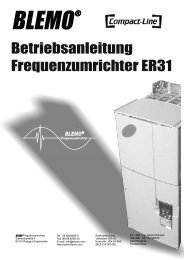You also want an ePaper? Increase the reach of your titles
YUMPU automatically turns print PDFs into web optimized ePapers that Google loves.
Wiring<br />
INADEQUATE OVERCURRENT PROTECTION<br />
WARNING<br />
• An overcurrent protective device must be installed on the line-side of the SH31 to achieve published short-circuit withstand ratings.<br />
• Do not exceed the maximum overcurrent protective device ratings shown on page 84.<br />
• Do not connect the soft starter to a power feeder whose short circuit capacity exceeds the soft starter short circuit withstand rating<br />
shown on page 84.<br />
Failure to follow these instructions can result in death, serious injury, or equipment damage.<br />
• Power factor correction capacitors should not be connected to a motor controlled by an SH31 soft starter. If power factor correction<br />
is required, the capacitors must be located on the line-side of the soft starter. A separate contactor should be used to switch the<br />
capacitors off when the motor is off, or during acceleration and deceleration. Refer to bulletin No 8638PD9603.<br />
RISK OF DAMAGE TO THE SOFT STARTER<br />
CAUTION<br />
• Do not connect power factor correction capacitors to the load-side power circuit of the SH31.<br />
• Do not connect loads other than motors (for example transformers and resistors are forbidden).<br />
Failure to follow these instructions can result in equipment damage.<br />
• The SH31 uses solid-state power switches to control motor power. When checking the condition of conductor or motor insulation, do<br />
not connect the high potential dielectric test equipment or insulation resistance tester to the soft starter since the test voltages used<br />
may damage the soft starter. Always disconnect the soft starter from the conductors or motor before performing such tests.<br />
RISK OF DAMAGE TO THE SOFT STARTER<br />
CAUTION<br />
• Do not perform high potential dielectric tests on circuits while the circuits are connected to the SH31 soft starter.<br />
• Any circuit requiring high potential dielectric tests must be disconnected from the soft starter prior to performing the test.<br />
Failure to follow these instructions can result in equipment damage.<br />
• The SH31 contains electronic circuitry to detect and signal when the solid-state switches have become inoperable.<br />
• Since the solid-state switches may be incapable of completely blocking the motor power should the soft starter detect a fault, auxiliary<br />
isolation on the line side of the soft starter is required. Use either a circuit breaker equipped with a shunt trip coil or an electromagnetic<br />
contactor. Connect the isolation device to the detected fault relay of the soft starter so that it opens the soft starter power circuit in the<br />
event of a soft starter trip. The isolation device must be capable of interrupting motor locked rotor current.<br />
27


